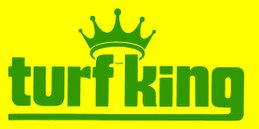
I don't have a lot of these dainty bulbs. Actually, this is the only spot in my garden, but they are always the first to bloom in the beds. From here on in the other spring flowers will come along in their proper order and sequence. . . . all in good time.
Thursday, March 29, 2007
Snowdrops
Monday, March 26, 2007
Do I need to rake my lawn?
If you have a lawn/tree/shrub that needs some Tender Loving Care- get The KING OF GREEN:
Click here to Request a Quote Online -
Tuesday, March 20, 2007
Signs of Spring- besides robins
This morning, I caught a rabbit feeding on the lawn. Now when I say “caught”, I mean visually not literally. I wouldn’t mind catching one literally, as they are multiplying like “rabbits.” The bad part of course, is that they like to eat my plants. Last year, they kept taking the tops of the lettuce plants and nibbling on the swiss chard. During the winter, they will “prune” certain plants, like the spireas, euonymus, and burning bush.
Click here to Request a Quote Online -
Thursday, March 15, 2007
Vole Damage
If you have a lawn/tree/shrub that needs some Tender Loving Care- get The KING OF GREEN:
Click here to Request a Quote Online -
Tuesday, March 13, 2007
Global Warming
It is supposed to get warm this week and a lot of snow is melting very quickly. Which got me to thinking about all the attention "Global Warming" has been getting lately. Not that you would have noticed with the record cold temperatures last week.
So do lawns help with global warming? Maybe or maybe not, but they can keep the area around your home cooler. Certainly at least compared to pavement and asphalt.
Monday, March 12, 2007
Recycling the Christmas Tree
My youngest son is insistent that Christmas isn’t Christmas without a real Christmas tree. That’s fine since he will take it upon himself to choose the tree, bring it home and even set it up and decorate it.






